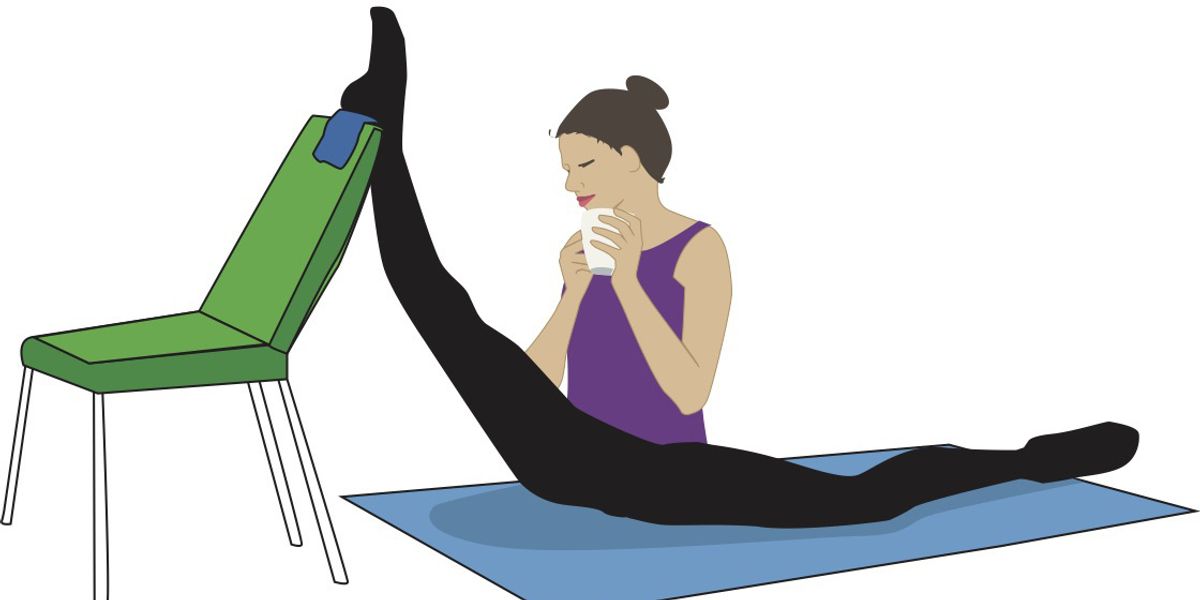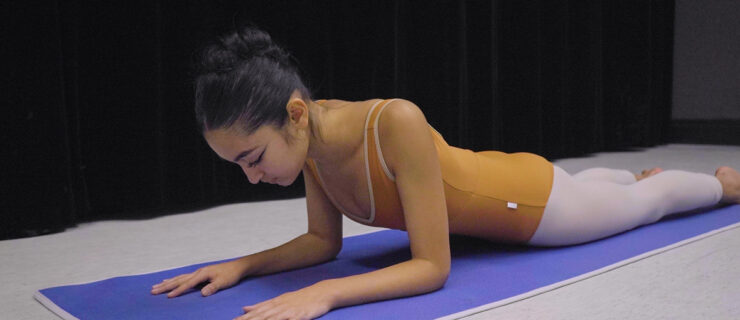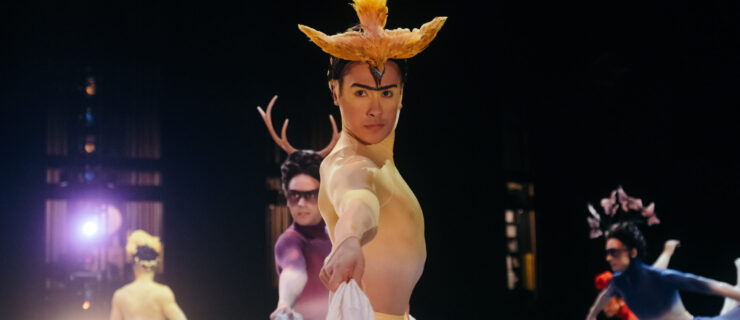Extreme Stretching: The Risks of Sitting in Oversplits
This story originally appeared in the August/September 2016 issue of Pointe.
It’s a familiar sight on Instagram: A dancer lounges casually in an oversplit, drinking her morning coffee. One foot is propped up on blocks (or even a chair) as her legs split well beyond 180 degrees.
In recent years, extreme flexibility has become the new normal, with social media flooded with images of dancers contorting themselves into pretzel positions. The question of whether one must be this flexible to achieve a professional dance career is a matter of taste, but it’s clear that at competitions, circus-like penchés and développés are being rewarded with medals, scholarships and contracts. But can extreme stretching cause injuries down the line? In truth, it can be either safe or risky.
Why It’s Risky
According to Marika Molnar, PT, LAc, who founded Westside Dance Physical Therapy and directs New York City Ballet’s physical therapy program, dancers should avoid static stretching (holding for longer than 30 seconds) in extreme positions at all costs. In addition to loosening the ligaments that protect your hips and knees (which do not spring back into shape once overstretched), Molnar says, “in such an oversplit, you are actually pressing the femur bone into the acetabula at such a damaging angle and with so much force that you can injure the labrum, causing a tear in the cartilage of your hip.”
Dr. William Hamilton, a New York City–based orthopedic surgeon who often works with dancers, agrees, noting that most dancers are pretty flexible to begin with. “Hypermobile dancers can take the joint through more than it is designed to do,” he says. “Anyone moderately loose should be careful holding such positions.” In addition to labral tears and other injuries, extreme static stretching can cause joint destabilization in hypermobile individuals.
Flexibility vs. Function
Ballet dancers need to jump and turn as much as they need a high battement, which requires as much core strength, placement and coordination as it does flexibility. Molnar notes that, “unless you’re in Cirque, it’s not necessary to hold extreme positions because it’s not functional for ballet.”
In fact, static stretching can also have a negative effect on muscle contraction, decreasing your ability to get into the air during jumps and interfering with controlled landings. “Any kind of stretching, extreme or not, that is held for more than 20 seconds can cause a reduction in the height of jumps,” says Molnar. “It is important for dancers to understand that direct correlation.”
Kee Juan Han, former director of The Washington School of Ballet, has a go-to quiz for dancers who are worried more about flexibility than strength and placement. “I ask them what word goes before ballet,” says Han. “In my book it is ‘classical,’ and I try to remind the students of that context.”
Sweat + Patience = Flexibility
Luckily, there is a safer way to develop flexibility. For Slawomir Wozniak, director of the Master Ballet Academy in Arizona, warming up is a nonnegotiable rule for the school’s weekly conditioning classes. “We never go into stretching without first skipping around the room with arms crossed, doing squats or push-ups for at least two minutes to increase blood flow,” Wozniak says. Molnar agrees: “Stretching is not a warm-up. Jog around the room, even before a stretch class. Or use your diaphragm muscle to do quick breathing like ‘the hundred’ exercise in Pilates, alternating inhaling and exhaling.”
Once warm, avoid holding stretches for longer than 30 seconds. If you really need to gain more flexibility, hold stretches for shorter periods but repeat more often throughout the week to safely lengthen the muscle. “The slower you build stretch the better,” cautions Wozniak.
Check in with your body constantly, he continues. If you feel a sharp or stinging pain, or if you can’t take deep breaths, stop. Extremely flexible dancers often have a hard time feeling their limits and should avoid using any gadgets, such as foot stretchers, that can easily push the joint too far.
Keep in mind, too, that flexibility is just one half of the puzzle needed to lift your leg. Han begins his ballet classes with conditioning on the floor for the abdominal and back muscles. Once the core is warm, the stretching that is naturally woven throughout class combinations will be more properly placed.
“Students get so fixated by something on YouTube, but for me, it is about placement,” says Han of his approach to ballet’s increasingly gymnastic demands. “Your core is what is going to hold you and your leg up.”
Similarly, Wozniak is careful to build a mix of floor barre, Pilates and yoga—along with some gymnastics—into his conditioning classes. “Stretching without conditioning muscles doesn’t help much,” says Wozniak. “You have to be flexible and capable.”
While it’s hard not to be jealous of the latest Instagram post, focus on the big picture. “Dancers aren’t just more flexible,” says Wozniak. “They are getting stronger, faster and more coordinated.”





